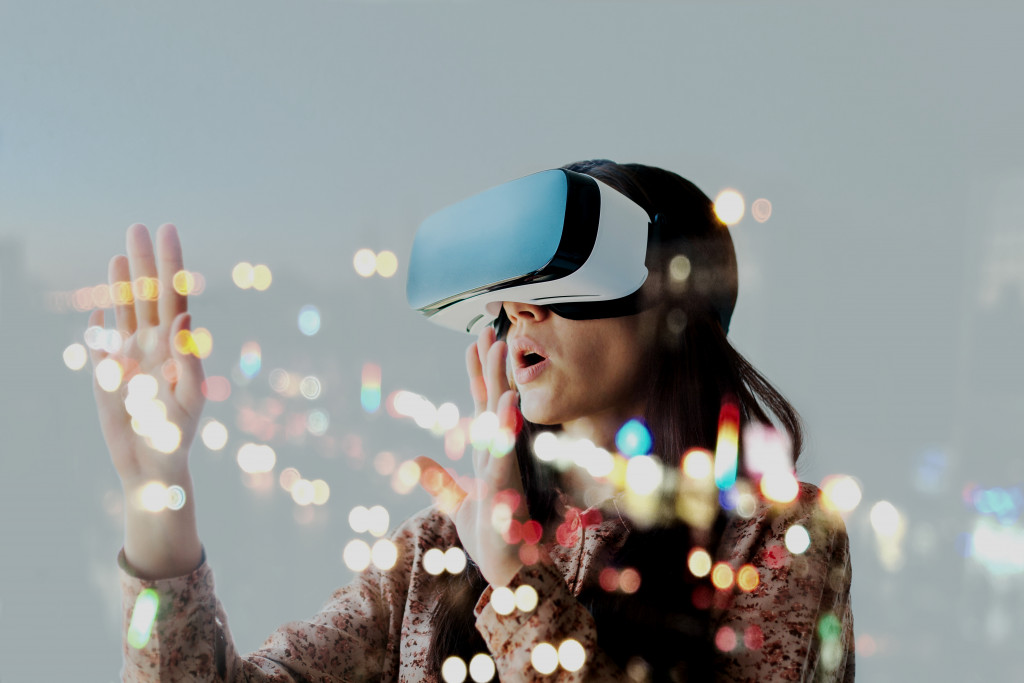Imagine a world where everything is possible. A world where everything you could ever think of can come to life in an instant. Virtual reality (VR) is a technology that can do just that. As its name suggests, virtual reality allows you to explore and experience numerous possibilities in a virtual world. These factors help make VR the perfect tool for learning.
Since VR places you in a virtual world, the consequences of failure are at a minimum. It helps people learn without fear of committing a mistake that could result in significant losses. It gives them the confidence to keep trying whenever they fail since they can easily restart or redo any task. The strategy helps them hone their skills further and at a much deeper level. It fundamentally prepares them better to apply those skills in the real world.
While VR is an incredible technology on its own, it’s just one part of a group of technologies that allows the real and the virtual world to meet. Virtual reality, augmented reality (AR), and mixed reality (MR) are all technologies part of extended reality (XR). They all help create worlds that mimic settings in real life or place virtual things in the real world that contribute to an immersive experience. The application of extended reality in education and training can completely transform how people learn. Here’s how each part of XR can elevate the learning process.
Virtual Reality
The main objective of VR is to transport people into virtual worlds by using VR devices. These devices usually consist of VR goggles, a pair of ergonomic controllers for each hand, and a headset. These three elements of the VR device help stimulate a person’s senses. The goggles provide visual stimulation, the headset immerses people in sound, and the controllers help simulate touch. These three things combined serve as a person’s way to interact with objects in the virtual world.
VR’s Role in Education:
VR provides students with a more immersive learning experience. You can only learn so much about places and moments in history through texts and pictures in books. VR allows students to experience these places and moments as if they were there. Exploring caves and pyramids or meeting dinosaurs and notable people in history are all possible through VR. It makes the learning experience more memorable and impactful.
VR’s Role in Training:
Businesses invest a lot in training their employees, especially in production and manufacturing. But since newly onboarded employees have no prior knowledge of how things get done, they’re prone to making mistakes while learning the skills required of them. Because of this, businesses end up spending more time and materials. In some cases, these mistakes could even end up in costly accidents, or worse, injuries, especially when it comes to skills in heavy machinery.
VR helps mitigate those expenses and minimize the risks involved when training employees by providing a safe space for them to learn. Instead of operating the machine in real life from the start, they can first learn about them in a virtual setting. They can practice on a virtual version until they grasp the fundamentals and develop a deeper understanding of how to operate them. It prepares them to use the machines better in the real world, minimizing costs and the probability of failures and injuries.
Augmented Reality
AR is a type of technology that alters reality by superimposing virtual objects in the real world. It’s also the most accessible technology of XR. It doesn’t require people to be tethered to a device like VR because anyone with a modern smartphone can take advantage of it.
AR’s role in Education:
AR can help students learn more about things in greater detail in the classroom or at home. For example, since all it needs is a smartphone, students can learn about parts of an animal, how big and small they are as if they were in the same room. Another possibility of AR is allowing students to create 3D works and place them in the real world. It gives them an incentive to learn and make things. Additionally, it can gamify the learning experience, making it more fun and attractive to younger audiences.
AR’s Role in Training:
Businesses can benefit a lot from AR when training individuals. It’s a low-cost option that helps trainees and newly hired employees familiarize themselves with products and services. AR helps them understand the scale of your products and the flow and process of your services. Another advantage of it is that they can train in AR remotely. Since no special equipment is needed to use AR, training for employees can happen in the comforts of their own homes.
Mixed Reality
MR is like an advanced version of AR. It allows people to superimpose virtual objects into the real world but also lets them manipulate them. While MR is still in its early stages, there are so many possibilities that it can achieve. If you major in medicine, you could use MR to observe organs and expand them to see each part and every detail. If you’re a new hire, a programmed MR experience made by the company can help you find your way through an office and learn the ins and outs through a virtual experience in the real world. There are so many possibilities that we can explore through MR, and these are only just the beginning.
Wrapping Up
As with all things, change is inevitable. The education system has stayed pretty much the same for generations. And while computers and other technologies exist, people still learn through text, pictures, and videos. XR technologies have the potential to give the learning experience a revamp that it so desperately needs. The faster we can implement them in schools and training, the better and more capable people can become and contribute more to society.
